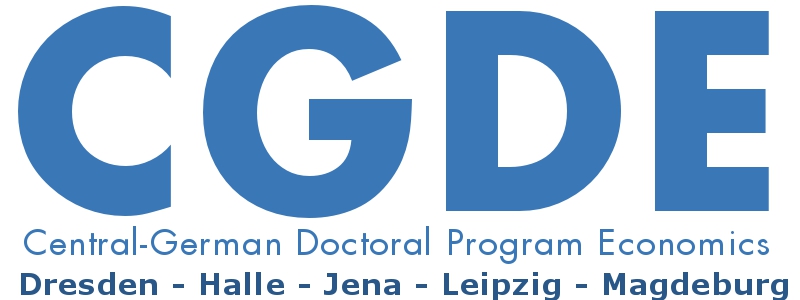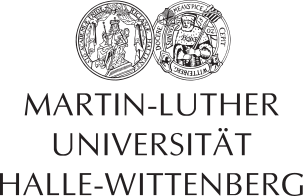Econometrics of Competitive and Regulated Markets
Lecturer: Professor Raffaello Seri, PhD (University Varese)
Venue: Friedrich Schiller University Jena, Bachstraße 8k
Date: January 11, 2016 – January 15, 2016
Monday, 11 January 2016 (14-16), Tuesday, 12 January 2016 – Thursday, 14 January 2016 (9-12 and 14-17), Friday, 15 January 2016 (9-12)
Registration: Please contact Tina Wolf, E-mail: tina.wolf@uni-jena.de, until 8 January 2016.
Course outline
The course will be based on a set of slides written by the teacher. A list of academic papers or blog posts addressing more advanced topics will be provided to the students as additional readings. Mathematical derivations will be dealt with in handouts written by the lecturer. All the communications will be managed through a Google Group to which students attending the lectures will be invited. Anonymous communications to the teacher can be addressed from the email address econometria@outlook.com to the email addresses of the teacher (raffaello.seri@uninsubria.it) or of the course (ecrm1516_jena@googlegroups.com).
Google Group name: ECRM1516_Jena
Google Group homepage: https://groups.google.com/d/forum/ecrm1516_jena
Google Group email: ecrm1516_jena@googlegroups.com
Course homepage: http://eco.uninsubria.it/webdocenti/raffaello/
Course email: econometria@outlook.com on http://www.outlook.com
Aim
The objective of the course is to provide the students with some econometric tools for the analysis of the behavior of industries and markets, i.e. the linear regression model, as estimated through ordinary least squares or through instrumental variables, the simultaneous equations model, discrete choice models, as estimated through maximum likelihood, and more complex techniques of inference in presence of data affected by biases arising in observational data. The most trivial competence that the student should obtain from the course is to master the interpretation of the results of OLS, IV and 2SLS estimation. More ambitiously, the course aims at teaching something about the scientific method, namely how statistical inference can help in testing hypotheses and which arrangements have to be done to this procedure in a complex context such as the economic environment.
Material of the Course
The material of the course is organized in two modules. It starts with an introduction to the free and open-source software R, that will be used for all applications and examples.
Module 1 – Econometrics of Industrial Organization
This module deals with the econometrics of industrial organization, both in the case of perfectly competitive markets and in the case of imperfect competition. We start with the econometric analysis of prices and quantities in competitive markets. The classical way to analyse the market equilibrium, i.e. the mechanism for which a certain amount of a good is sold at a certain price in a competitive market, is to see it as the intersection of a demand and of a supply curve. Therefore we present econometric tools for the estimation of these functions, namely simultaneous equations models.
After this, we address some weaknesses arising in this way of modelling markets. While in mainstream economic theory the firm has often been considered as a “black box”, we will take a look inside the box to describe the productive structure of the firm using the concepts of production frontier and efficiencies. This paves the way for the introduction of oligopoly models, in which firms are no longer price-takers but strategically internalize the demand function of the consumers. We then consider demand-supply models in which expectations and delays create dynamics in prices and quantities. After that, we introduce some models, from economics, management and psychology, allowing for differentiation in the demand and supply of products. The last topic of this module concerns the diffusion of new products; the exposition will benefit from insights from marketing, sociology, organization sciences.
Module 2 – Policy Impact Assessment
In this module, we will study the effects of interventions by firms or external agents. In the first part, we extend the scope of the first module and consider goods for which markets do not (yet) exist. After introducing discrete choice models, we apply them to the assessment of goods, like environmental or cultural ones, that are not tradable in a market, and to the decisions of firms, especially as concerns the creation of new products and the entry in new markets.
In the second part, we completely change our point of view and we study the impact of policy interventions on economic agents in regulated markets. When the objective is to study the effect of a policy change on the behavior of individuals, we would like to use the estimated relation to simulate the effect of alternative circumstances on the economic reality. In natural sciences, this problem is generally solved through a careful design of the experiment in which data are collected. In social sciences, this is generally impossible as classical controlled experiments are often unfeasible because of economic or ethical constraints. Therefore, we are compelled to use more refined inferential techniques to obtain causal relations from observational data. In this part of the course, we will describe the design of controlled experiments and we will see in which sense economic data do not comply with the standards of this class of experiments. Then we will describe the techniques that can be used to infer causal relationships in the absence of experimental data.
Outline
- Lecture 00 – R
- Econometrics of Competitive Markets
– Lecture 01 – Linear Regression
– Lecture 02 – Production Theory
– Lecture 03 – Consumption Theory
– Lecture 04 – Economic Aspects of the Demand-Supply Equilibrium
– Lecture 05 – The Instrumental Variables Estimator
– Lecture 06 – Simultaneous Equations Systems and the Demand-Supply Equilibrium
- Econometrics of Imperfect Markets
– Lecture 07 – Production Theory Reloaded
– Lecture 08 – Oligopolistic Models
– Lecture 09 – Dynamics in Demand-Supply Equilibria
– Lecture 10 – Hedonic Price Models, Parametric Cost Analysis and Conjoint Analysis
– Lecture 11 – Product Diffusion Models
- Econometrics of Non-Existent Markets
– Lecture 12 – Discrete Choice Models
– Lecture 13 – Contingent Valuation Studies
– Lecture 14 – Models of Firm Decisions
- Econometrics of Policy Interventions
– Lecture 15 – Causal Relationships and Controlled Experiments
– Lecture 16 – The Neyman-Rubin Causal Model
– Lecture 17 – Estimation under Conditional Independence
– Lecture 18 – Estimation without Conditional Independence
Lectures
The lectures will focus on the second module of the course, especially on the part concerning the impact of policy interventions. If required by the students, and in conformity with their preparation, other topics will be accordingly covered.
These are the hours of the lectures:
Monday, January 11: 14:00-18:00
Tuesday, January 12: 9:00-12:00
Wednesday, January 13: 9:00-12:00
Thursday, January 14: 9:00-12:00
Friday, January 15: 9:00-12:00
In case the students request it, a JiTT (Just-in-Time Teaching) methodology could be implemented. In this case, at the end of each lecture and in preparation of the following one, students will be asked to read the materials provided by the teacher, and these materials will be discussed during the following class.
Assessment
Students will be evaluated on the basis of a take home exam.























